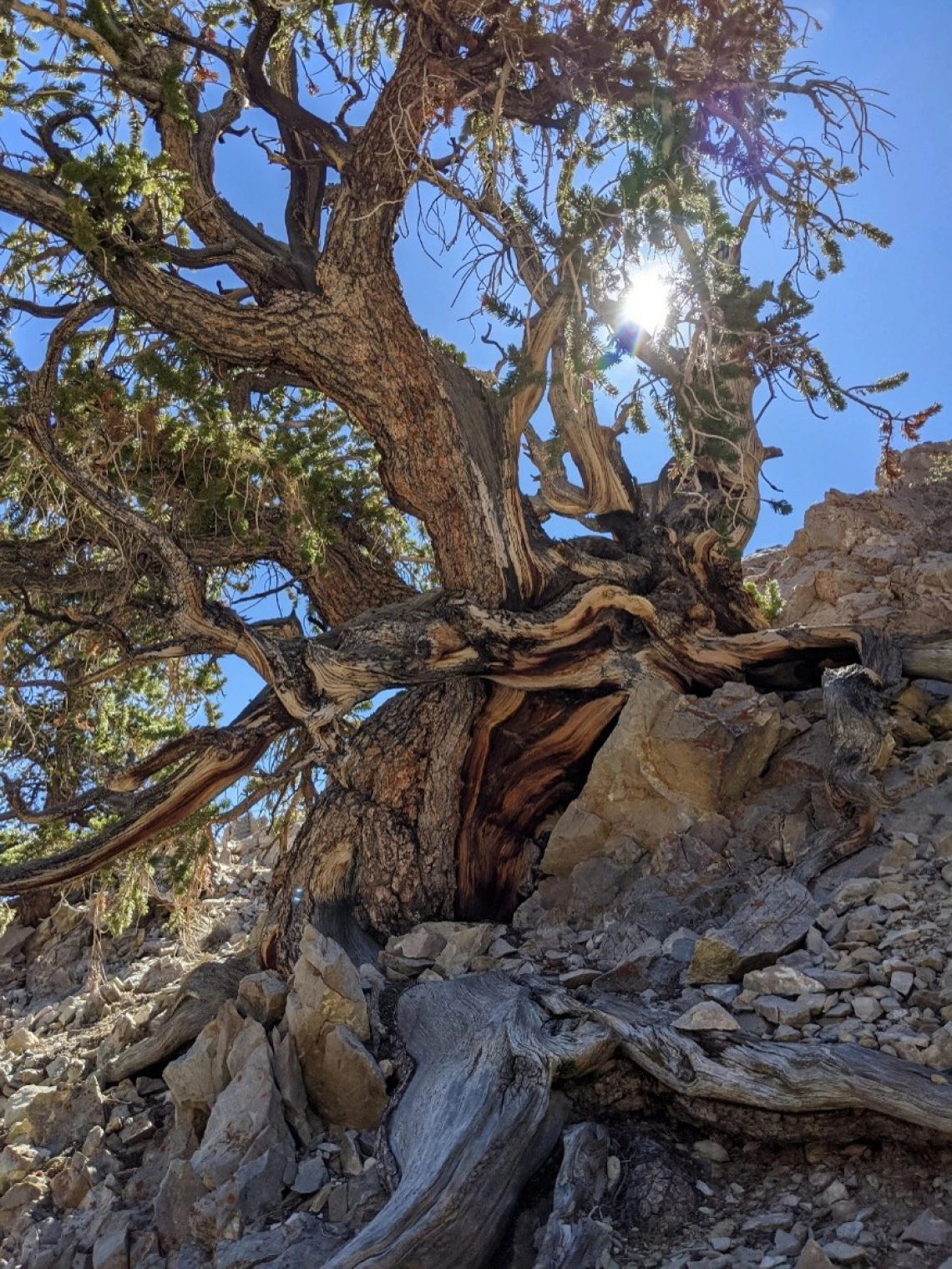Early LTRR bristlecone pine research concentrated on field collections and the development of tree-ring chronologies, and as a consequence, the collections have never been fully inventoried and systematically organized. Over the past year, Shannon Harrel (LTRR Assistant Curator), completed an inventory of 20,000 pieces of bristlecone pine wood, which are now organized in over 300 boxes. She is currently undertaking the monumental task of tracking down all sources of ancillary data, with the goal of compiling a complete catalog of bristlecone data that matches physical samples with digital data and metadata.
Because of its extraordinary lifespan and the excellent preservation of dead wood on the landscape, bristlecone pine provides a unique environmental record that is annually resolved, precisely dated, and extends millennia into the past. Bristlecone pine chronologies have been used to develop reconstructions of temperature and moisture variability because they grow in both upper tree-line (temperature limited) and arid (moisture-limited) environments. Bristlecone pine data have also been used to track changes in tree line and to develop chronologies of volcanic eruptions. Importantly, bristlecone pine has been critical for the calibration of the radiocarbon dating scale.
The LTRR bristlecone pine archive holds the collections from investigators including Edmund Shulman, Val LaMarche, Wes Ferguson, Don Graybill, Tom Harlan, Malcolm Hughes, and Matt Salzer to name a few. Collections continue today. However, only limited efforts have been undertaken to organize these collections, and as a result, locating samples, associated digital data, and collection information has been extremely difficult. As interest in these unique collections grows, the need for this organization has become critical.
Over the past year, Shannon Harrel (LTRR Assistant Curator), completed an inventory of 20,000 pieces of bristlecone pine wood, which are now organized in over 300 boxes. The next step is to link sample codes to the codes used in the digital data so that the physical specimens are linked to the measurement files. Additionally, all other sources of ancillary data need to be located and linked to the physical specimens and measurements. These include field and collection notes and sketches, dating notes, and any correspondence related to a collection. The goal is to have a complete catalog of information on bristlecone pine collections, including samples, measurement data, and details of who, where, and when a collection was made, for what purpose, project, funding, and organization.
Bristlecone pine is one of the most important collections at the LTRR. It is a unique and valuable resource to the paleoclimate community. While ring-width measurements have long been the standard way of measuring and extracting climate information, advances in dendrochronology have resulted in a multitude of new ways to measure and analyze the information encoded in tree rings. These include chemical, radiocarbon, and stable isotope measurements, and quantitative wood anatomy. New studies are employing these techniques to explore the possibility of extracting additional environmental information from long-lived bristlecone pine.
Beyond its scientific value, bristlecone pine is an iconic species with the capacity to inspire awe and wonder in anyone who holds a piece this ancient wood in their hand. It is an important resource for LTRR outreach. It offers a way to engage the general public with the work we do at the LTRR and make the science of dendrochronology accessible to everyone.
The bristlecone pine archival work has been supported by small bits of funding, which have not come close to covering the costs to organize the full set of collections. More broadly, opportunities for LTRR Archive funding have become even more scarce in the past year. Two major funded grants from National Endowment for the Humanities were awarded to curator Peter Brewer (https://infosci.arizona.edu/news/infosci-ltrr-neh-grant-for-cultural-heritage-collections-training), but $368,628 of these funds (about half of the total) were rescinded this past spring. Opportunities for external funding through the National Science Foundation and National Park Service remain uncertain. Now more than ever, funding is needed to support the LTRR Archive and its important work (https://ltrr.arizona.edu/support).

